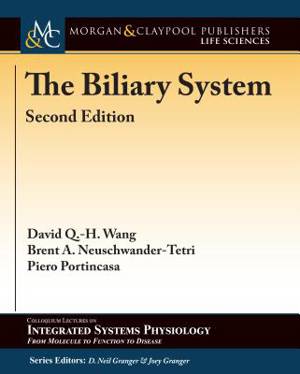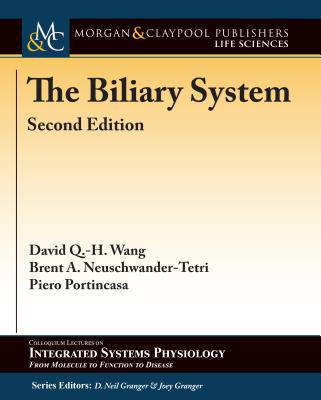
- Afhalen na 1 uur in een winkel met voorraad
- Gratis thuislevering in België vanaf € 30
- Ruim aanbod met 7 miljoen producten
- Afhalen na 1 uur in een winkel met voorraad
- Gratis thuislevering in België vanaf € 30
- Ruim aanbod met 7 miljoen producten
Zoeken
€ 98,95
+ 197 punten
Omschrijving
The liver is a vital organ involved in numerous metabolic processes such as cholesterol and bile acid metabolism, biliary lipid secretion, and bile formation. Cholesterol balance across the liver has a crucial effect on influencing plasma total and LDL cholesterol levels and biliary cholesterol concentrations. Cholesterol and bile acid biosyntheses are primarily modulated by negative feedback regulatory mechanisms through the sterol regulatory element-binding protein isoform 2 (SREBP-2) and the farnesoid X receptor (FXR) pathways, respectively. The conversion of cholesterol to bile acids in the liver can balance the fecal excretion of bile acids, which is an important route for the removal of cholesterol from the body. Bile formation begins in the bile canaliculi, and maintenance of the enterohepatic circulation of bile acids results in a continuous secretion of bile. Hepatic secretion of biliary lipids is determined mainly by a group of ATP-binding cassette (ABC) transporters that are located on the canalicular membrane of hepatocytes, which are regulated by various nuclear receptors. Bile acids promote bile flow by their osmotic effects. Also, they are essential for the intestinal absorption of cholesterol, fatty acids, and fat-soluble vitamins and play an important role in aiding the digestion of dietary fat. Bile acids function as signaling molecules and anti-inflammatory agents to regulate lipid, glucose, and energy metabolism by rapidly activating nuclear receptors and cell signaling pathways. This eBook summarizes the progress in the molecular and cellular mechanisms of cholesterol and bile acid metabolism and the physical-chemistry of biliary lipids, with emphasis on biliary lipid metabolism that is regulated by nuclear receptors in the hepatobiliary system.
Specificaties
Betrokkenen
- Auteur(s):
- Uitgeverij:
Inhoud
- Aantal bladzijden:
- 178
- Taal:
- Engels
- Reeks:
Eigenschappen
- Productcode (EAN):
- 9781615047376
- Verschijningsdatum:
- 15/12/2016
- Uitvoering:
- Paperback
- Formaat:
- Trade paperback (VS)
- Afmetingen:
- 190 mm x 235 mm
- Gewicht:
- 331 g

Alleen bij Standaard Boekhandel
+ 197 punten op je klantenkaart van Standaard Boekhandel
Beoordelingen
We publiceren alleen reviews die voldoen aan de voorwaarden voor reviews. Bekijk onze voorwaarden voor reviews.











